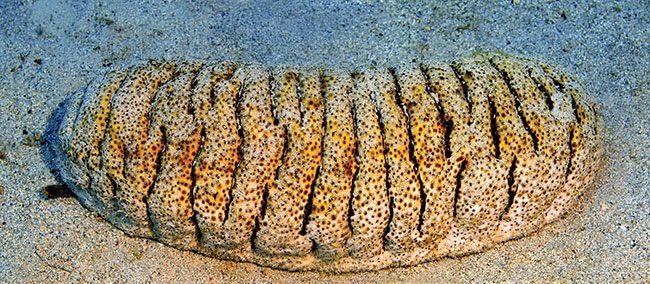
News & Views
Breeding
Research
Research explores hatchery techniques for sea cucumber in Oman
July 19, 2019 By Ruby Gonzalez
 Sea cucumber is a recognized high-value product in Oman Despite successful outcomes with fertilization
Sea cucumber is a recognized high-value product in Oman Despite successful outcomes with fertilizationDespite successful outcomes with fertilization, a sea cucumber (Holothuria scabra) hatchery trial conducted in Oman resulted in mass mortality during the first few days post-fertilization (PF).
This could have been caused by using equipment of “concomitant hatcheries,” according to the research team, composed of Al-Rashdi KM, Claereboudt MR, Eeckhaut. They said this could be prevented in the future by “emphasizing the need for high levels of training in sterilization and decontamination and a sepsis.”
The hatchery trials comprised first phase of the first-ever initiative in Oman to develop hatchery techniques for sea cucumber for aquaculture development and stock enhancement programs. The authors documented this in their research article, “First trials on hatchery and larval development of the sea cucumber, Holothuria scabra (Jaeger 1883),” published this year in the HSOA Journal of Aquaculture and Fisheries, and funded by the Agricultural and Fisheries Development Fund.
High-value product
Sea cucumber is a recognized high-value product in Oman, where the dry weight costs over $1,000 per kilogram. Spurred by Asian markets, high demand for the slow-growing echinoderm has taken an “alarming” toll on Omani population of the species. Observed stock densities had decreased to less than one individual per hectare.
“Aquaculture of this species has developed as a response to the overfishing problem but has not been yet studied in Oman,” they said.
For the study, in vitro maturation and fertilization were conducted using an artificial maturation substance extracted from sea urchin oocytes. Four hatchery runs were conducted between September 2009 and November 2010, at the Aquaculture Research Unit of Sultan Qaboos University in Al-Hail. Land-based outdoors tanks were used to keep the broodstock.
Ninety percent fertilization and larval development rates were achieved, producing more than 400,000 larvae over four independent in vitro fertilization trials, and developed successfully into normal embryos and larvae.
However, mass mortality was observed across all trials during the first three days PF, reaching as much as 70 percent. From day four of development, survival rate remained almost stable.
During the daily microscopic observations of the larvae, abundant ciliate protozoans and copepods were observed in the larval tanks.
Antiseptic environment
Contamination by the feeding solutions had been ruled out because the mortality occurred before feeding. They said the presence of abundant copepods and ciliates could be responsible for the day three PF mortality.
Citing previous studies, the authors explained copepods attack larvae either directly or by repeated collisions, causing bodily damage to the larvae. Mortality due to ciliates had been observed.
In tracing the possible source of the copepods and ciliates, they said, “Since the water used for larval rearing was filtered and UV-treated, it is unlikely the source of the copepods and ciliates, but some of the equipment used to siphon the water, transfer the larvae from one container to another, the container themselves may have been contaminated by a concomitant fish hatchery and emphasize the need for high levels of training in sterilization and decontamination and a sepsis.”
Overall, the study said Oman’s potential to develop sea cucumber aquaculture is high. It has natural sites suited for sea ranching, such as the Bay of Mahout. Human resources and basic technology potential are in place.
“For example, less than one percent of the surface of the Bay of Mahout Bay could support the sea ranching of 4 M of sea cucumbers H. scabra if it is supplied by an efficient farm having 50,000 m2 of ponds and an efficient hatchery with 600,000 liters of adequate tanks.”
Print this page
Advertisement
- High hopes for new trout disease vaccine in Scotland
- Behind the scenes: Understanding oxygen delivery systems





